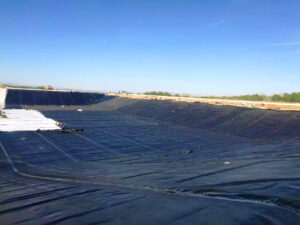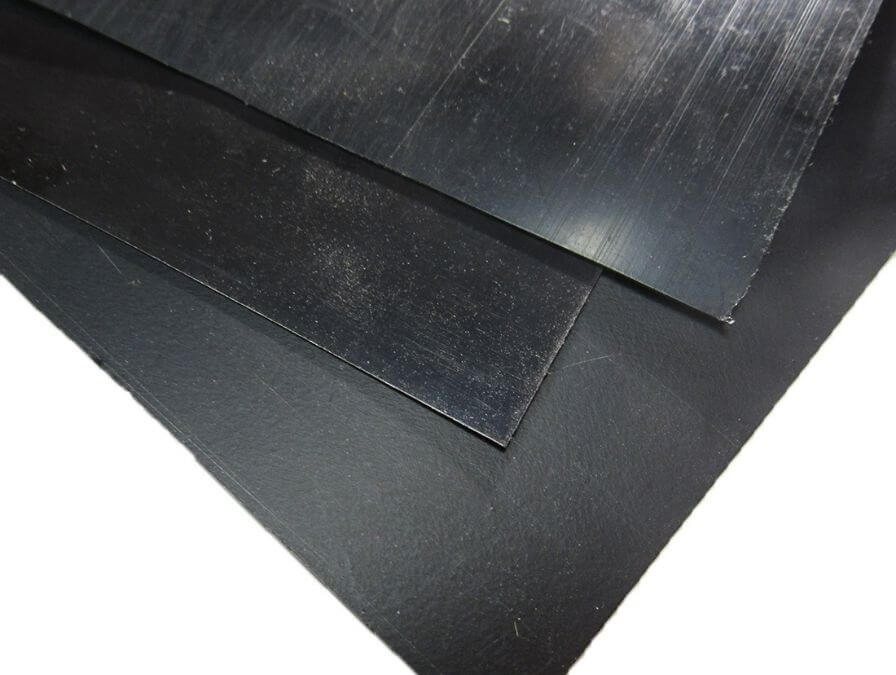Geomembrane thickness detection
The detection of geomembrane thickness is an important step in evaluating the quality and consistency of geomembrane products. Measurement of geomembrane thickness can help determine the actual thickness of the geomembrane to ensure that it meets design requirements. The following are some common geomembrane thickness detection methods:
Direct measurement: Direct measurement is one of the most commonly used geomembrane thickness detection methods. It requires the use of specialized measuring instruments such as tape measures or micrometers. The operator places the instrument on the surface of the geomembrane and then measures the thickness of the membrane material. This method is suitable for smaller area geomembranes.
Non-contact measurement: Non-contact measurement methods use laser, ultrasonic or optical measurement equipment to measure the thickness of geomembranes. These devices can accurately measure thickness without touching the geomembrane surface. The non-contact measurement method is suitable for geomembranes with large areas or where a high degree of accuracy is required.
Capacitance measurement: Capacitance measurement is a method of indirectly determining the thickness of a geomembrane by measuring changes in capacitance. This method uses two electrodes placed on both sides of the geomembrane to infer the thickness of the geomembrane by measuring changes in capacitance.
Please note that selecting the appropriate geomembrane thickness detection method depends on many factors, including the geomembrane size, application scenario, and accuracy requirements. It is recommended to follow relevant standards and procedures when conducting geomembrane thickness testing and ensure that appropriate instruments and equipment are used for measurement.

Geomembrane Tensile Test
Tensile testing of geomembranes is one of the important tests to evaluate their mechanical properties and strength. By conducting tensile tests, parameters such as tensile strength, elongation at break, and modulus of the geomembrane can be determined to evaluate its durability and reliability in practical applications.
Tensile testing of geomembranes is usually performed using a universal material testing machine. The following are the general steps:
Sample preparation: Cut representative specimens from the geomembrane. Cut a long, narrow strip of specimen on the geomembrane, keeping both ends flat.
Install the sample: Clamp the sample on the fixture of the universal material testing machine, ensuring that both ends of the sample are fixed. The clamping force should be moderate to avoid specimen slipping or damage.
Set test parameters: set the correct stretching speed and test range. Depending on the standard or specification used, determine appropriate parameters such as stretch rate, test temperature, etc.
To perform a tensile test: Start the testing machine and begin applying tensile force to the specimen. The test machine gradually stretches the sample at a set speed and records the stress and strain data during the stretching process.
Record data and analyze results: During tensile testing, the test machine records stress and strain data in real time. Once testing is complete, the data can be analyzed to calculate and evaluate parameters such as tensile strength, elongation at break, and modulus of the geomembrane.
Please note that when performing geomembrane tensile testing, you should follow applicable standards or specifications and ensure that appropriate testing equipment and methods are used. This ensures the accuracy and comparability of test results.

Geomembrane chemical resistance test
Chemical resistance testing of geomembranes is performed to evaluate their chemical resistance and stability when in contact with various chemicals. These tests are designed to determine whether the geomembrane is able to maintain its functionality and performance in a specific chemical environment. Here are some common geomembrane chemical resistance testing methods:
Soak test: The soak test is to place the geomembrane sample in a chemical solution and soak it for a certain period of time to simulate actual chemical exposure. After the test is completed, the appearance changes, texture, strength and dimensional stability of the geomembrane are evaluated.
Chemical exposure test: In this test, chemicals are applied directly to the geomembrane surface to simulate chemical exposure in actual engineering. Observe changes in the geomembrane such as color, clarity, texture, and strength to evaluate its ability to resist chemicals.
Irvine Volume Swell Test: This test method evaluates the chemical resistance of a geomembrane by its volume expansion after exposure to chemicals. Geomembrane samples are soaked in chemicals for a period of time, and then their volume changes are measured.
Chemical Penetration Resistance Test: This test method is designed to evaluate the permeability of a geomembrane to different chemicals. Geomembrane samples are prepared into specific shapes, placed in chemicals, and the rate and amount of chemicals penetrating the geomembrane are measured.
Chemical Degradation Test: This test method is used to evaluate the resistance of geomembranes to chemical degradation. Geomembrane samples are exposed to specific chemicals or conditions to examine changes in texture, strength and dimensional stability.
These testing methods are often based on relevant international standards or industry specifications, such as ASTM (American Society for Testing and Materials) and ISO (International Organization for Standardization). Test results can be used to evaluate the suitability of a geomembrane and help select geomembrane materials with chemical resistance suitable for specific chemical environments.
Author
-

Founded in 2002, Tinhy's team focuses on the manufacturing, marketing, installation, application and research and development of geosynthetic materials.
View all posts




